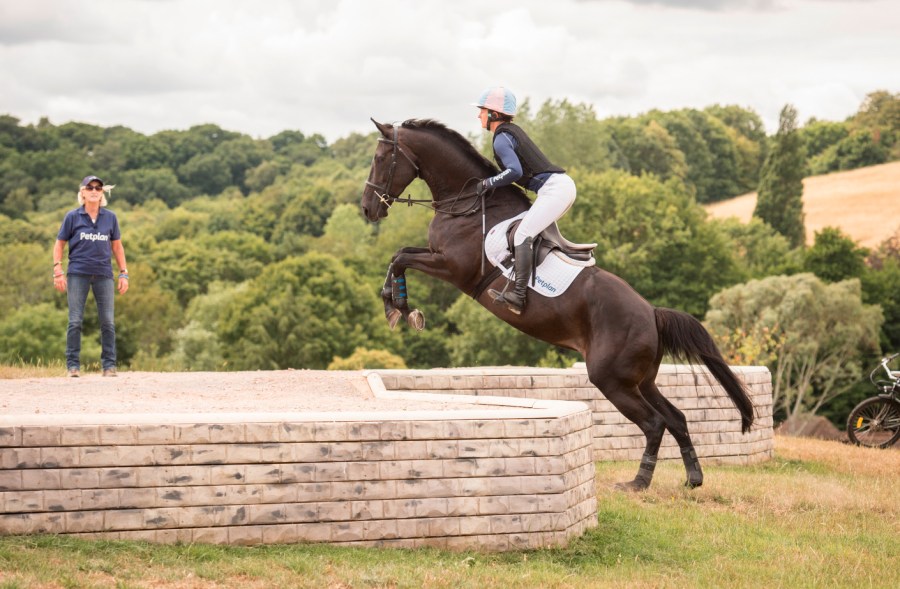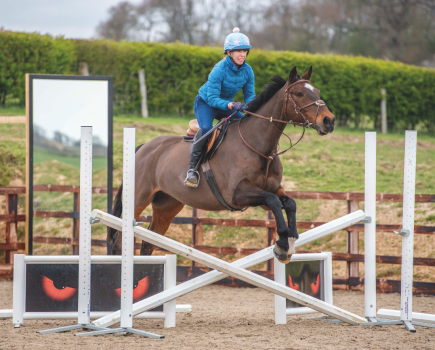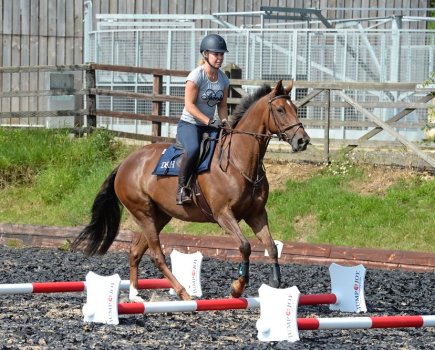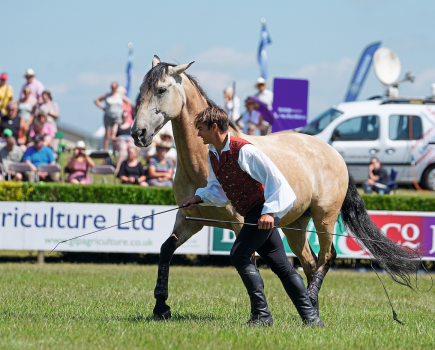How does a horse look at and assess a fence? Understanding this as a rider is key to being able to jump clear, stay safe around a course and keep both you and your horse feeling confident.
In the video below, six-time Badminton winner and Petplan Equine ambassador Lucinda Green explains how horses use different parts of their eyes to see a fence and why the position of their head in the approach and at the point of take-off is crucial to jumping clear.
Whatever type of fence you and your horse are tackling — whether it’s showjumps or cross-country fences, for example — he needs to be able to look and see the obstacle if he’s going to be able to clear it.
“Sight of a horse is a fascinating thing,” says Lucinda. “The distance vision of a horse is the bottom half of his eye; if he’s on the bit coming into a fence he actually can’t see it so it’s our job to say, ‘Oi, get your head up, there’s a fence’.
“The close vision is the top half of his eye, so when he’s coming into what looks like a perfectly normal telegraph pole, he might at the last second go, ‘Ah, ditch/trakehner — I didn’t see that!’ and he’ll throw his head down because the top half of his eye is his close vision [and he wants to look at it].
“In an ideal world we want horses looking [for the fence] as they come out of the turn, which means we don’t want them on the bit because if they’re on the bit they can’t see the fence ahead.”
Lucinda adds a tray under a pole.
“Very often, if horses see something they’re not expecting they’ll put their head right down because the top half of their eye is where their close vision is.
“Remember getting the head up [as you turn to the fence] because the horse wants maximum looking time.”
Main image: Your Horse Library (stock image). Video by Equestrian Pro TV









